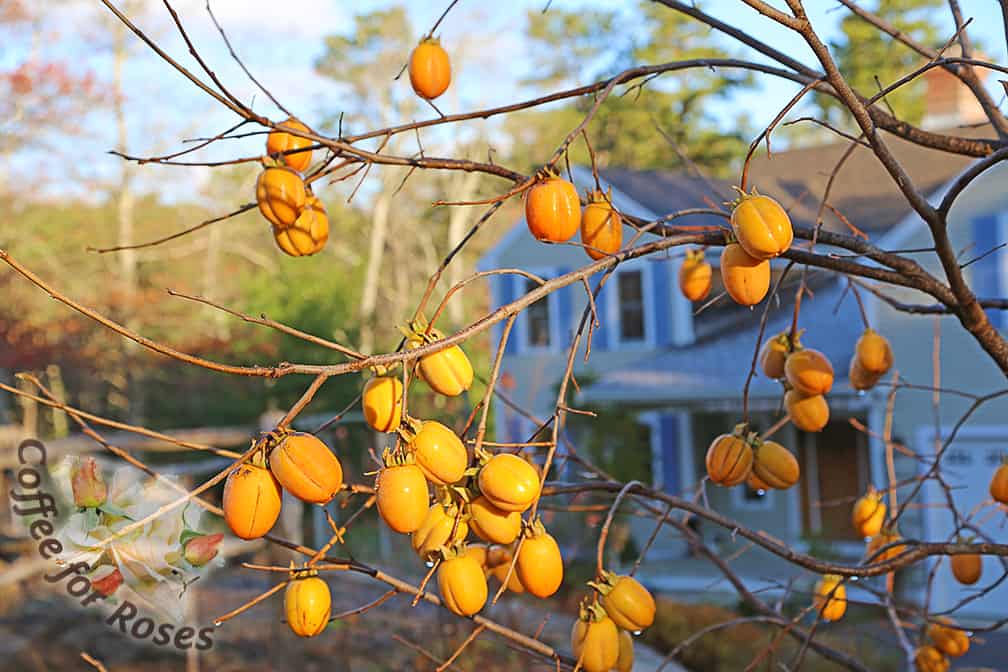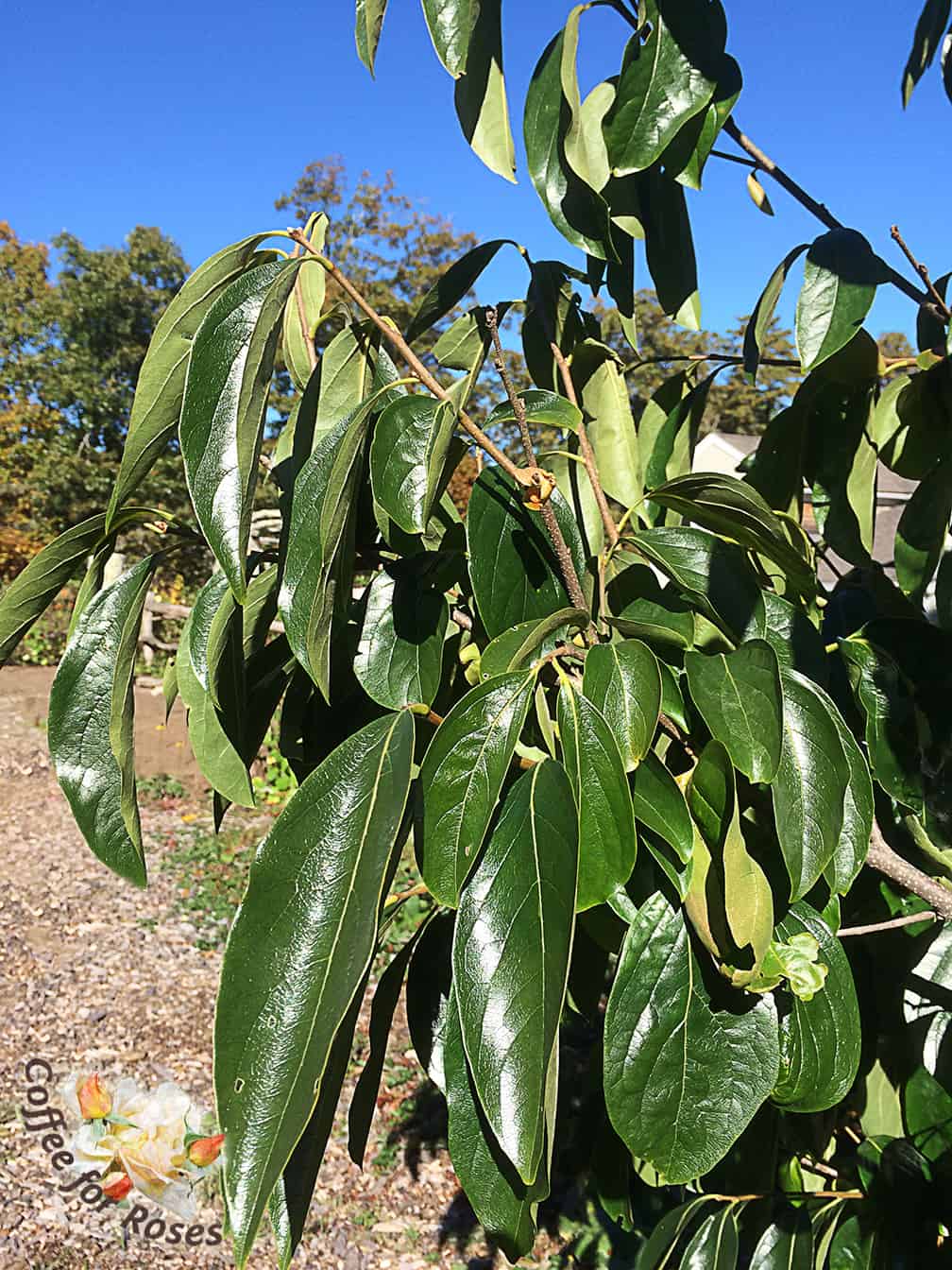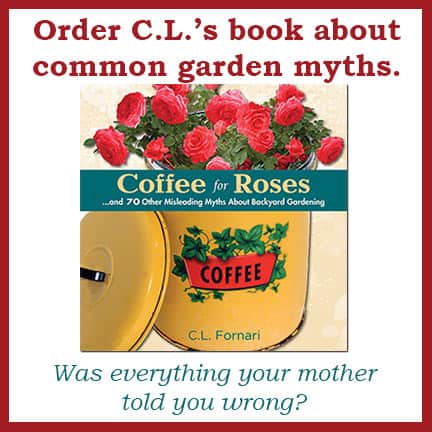I had a caller on GardenLine last November who had driven past a property where “There was an orange tree in the front yard. The leaves were gone but it was covered with oranges!” he said. “How can someone grow oranges on Cape Cod?” Although there is one variety of orange tree that is hardy here, Poncirus trifoliata, I was pretty sure that the tree this man had seen was not an orange at all. At this time of year the plant that has lost its leaves but retains orange fruit is a Diospyros kaki, aka the Saijo or Japanese persimmon.
It’s too bad that we all don’t have an empty few acres next to our homes where we can plant trees just to get to know them. There are so many splendid trees and even I, blessed to be living on over two acres of land, don’t have room to plant more. At this time of year, however, I’m especially glad that we put in a Saijo persimmon shortly after moving to Poison Ivy Acres six years ago. This plant has continually drawn my attention as it grows and I appreciate it anew every year.
Although Diospyros kaki is usually listed as a zone 7 tree, it has done very well in our warm-zone 6. While American persimmons need male and female plants in order to be fruitful, the Japanese persimmon will bear fruit even if there is only one on the landscape. Saijo fruit is very astringent, however, especially when it is still hard. I grow this tree for how it looks, and leave the fruit to the birds…they wait until the fruit has frozen and thawed several times, perhaps even fermenting, before descending on the plant with a great flapping of wings in mid-winter.
The Japanese persimmon is a small to medium sized tree, usually said to grow about 25 feet tall and 12 to 20 feet wide. As of this writing there are no major pests or disease problems that this plant is prone to. The flowers aren’t showy, but the glossy, slightly cupped leaves are beautiful throughout the summer and fall, and the orange fruit that is most striking after leaf-drop is a spirit-lifter at the time of year when the nights grow ever-longer and the temperatures drop.

Saijo fruit is beautifully lit by the early winter sun that’s low in the sky.

Aren’t these leaves beautiful? They are long, glossy and a beautiful dark green on the top and light green on the underside, giving the plant a two-tone effect when it’s windy.
There are many named cultivars of the Japanese persimmon, with various attributes, so if you’re looking for a small to medium sized tree for zones 7 (or warm 6) to 10, have I got a plant for you. Diospyros kaki is a tree that makes me smile.



